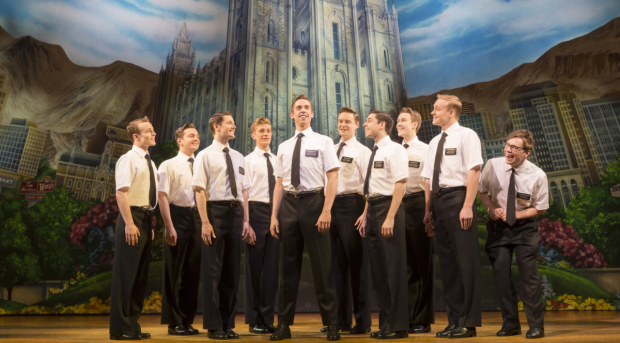Matt Trueman: The strange economics of theatre tickets
‘Theatre’s commitment to affordability has been admirable – in certain parts of the sector’

A lot of attention goes on top-price tickets. You can understand why. Astronomical fees can be galling. They grab the attention straight away: 'How much?' However, pricing is a spectrum – and sometimes an absurd one. Pick a seat two away from those top-price Mormon ones and you'll save a whopping £50. (That's still £152.50 – more than an average week's rent in Tottenham.) You can still sneak into the Prince of Wales for less than £40 – just as long as you're prepared to put up with a restricted view or risk vertigo. (It is possible to get tickets on the day via lottery at £20.)
Mormon's a moneyspinner, though. It's a commercial show entitled to charge whatever the market can take. Individually, it doesn't owe anybody a freebie – though, of course, it's entirely complicit in nudging prices ever upwards. In 2004, the most expensive ticket in the West End – touting excepted – was £49. It's quadrupled in little over a decade.
But it's the other end of the spectrum that we really ought to be watching, and it's fascinating to think how steady those prices have stayed. In many cases, in fact, they've got cheaper and we ought to make more of that. Other shows are available and, what's more, they're affordable.
You can still watch a show at Shakespeare's Globe for £5 – the same fee as when it opened in 1997; less than a pint of Meantime lager at the Founders Arms nearby. Adjusted for inflation, that ticket should be over £8 by now. It's the equivalent of the Globe having launched with a £3 groundling fee, and that's fairly astonishing.
'The wealthy sit downstairs, poorer patrons upstairs'
The National's Travelex season has kept pace with inflation, up to £15 now from the £10 starting fee in 2002. However it has served to keep other prices right down. The Donmar has its £10 Barclays Front Row tickets, the best seats in the house. The Royal Court sells every Monday ticket for a tenner and the Almeida has £10 seats at every performance. It's not just the subsidised sector either. The Michael Grandage Company has upped its commitment to affordable tickets: a quarter of those on offer for Photograph 51, starring Nicole Kidman – 200,000 in total – are on for £10. Sonia Friedman and the Barbican, too, have ensured that 100 tickets for the Benedict Cumberbatch Hamlet – almost one in ten – are the same price.
In London, you'll struggle to find a cinema ticket for cheaper than that. Indeed, it's quite possible to pay up to £15 to see a film during peak hours in the West End. (Mind you, in Shakespeare's day, groundling prices were a penny – the same as a loaf of bread.)
How has theatre remained so affordable? The idea behind Travelex was that full-houses at cheaper rates were better than half-filled houses with more expensive tickets. The National dropped its production costs too. Since then, the National has kept all its prices in line with inflation – its £50 top rate sounds steep, but it's the effectively same as it was in 2002. Elsewhere, though, increasing the premium prices has kept the other end low; one audience subsidising another, in a way.
Perhaps that reflects the state of London today, increasingly stratified as it is. The wealthy sit downstairs, poorer patrons upstairs and at the back. Are we back to a groundlings and galleries situation? Or is there something wonderful about the fact that different sorts of people can sit in the same room and watch the same play?
One problem is that neither approach – upping audience numbers or upping top-rate fees – is readily available to theatres outside London. They haven't the same on-tap population as the capital, nor the same levels of wealthy patrons willing to pay through the roof for the best seats. Last week, Out of Joint's Max Stafford-Clark told me that he thought regional theatres "have got their pricing structures badly wrong."
It's true that only the Nuffield Theatre in Southampton (as far as I could find) has £10 tickets available to all. (There are concessions for students and young audiences elsewhere.) But the difference isn't huge. You can get £12 tickets at the West Yorkshire Playhouse, Watford Palace and the Liverpool Everyman. The Manchester Royal Exchange, Home and Sheffield Crucible all have tickets for around the £15 mark.
Are those prices too high? Not really. Could they be cheaper? Probably. Somehow. But it's not fair to slam them as "badly wrong".
Theatre's commitment to affordability has been admirable – in certain parts of the sector. But it's a measure of a warped ecology when you can see the entire Globe season – eight shows, all unsubsidised – for much the same as seeing some of The Book of Mormon from a restricted view seat.













